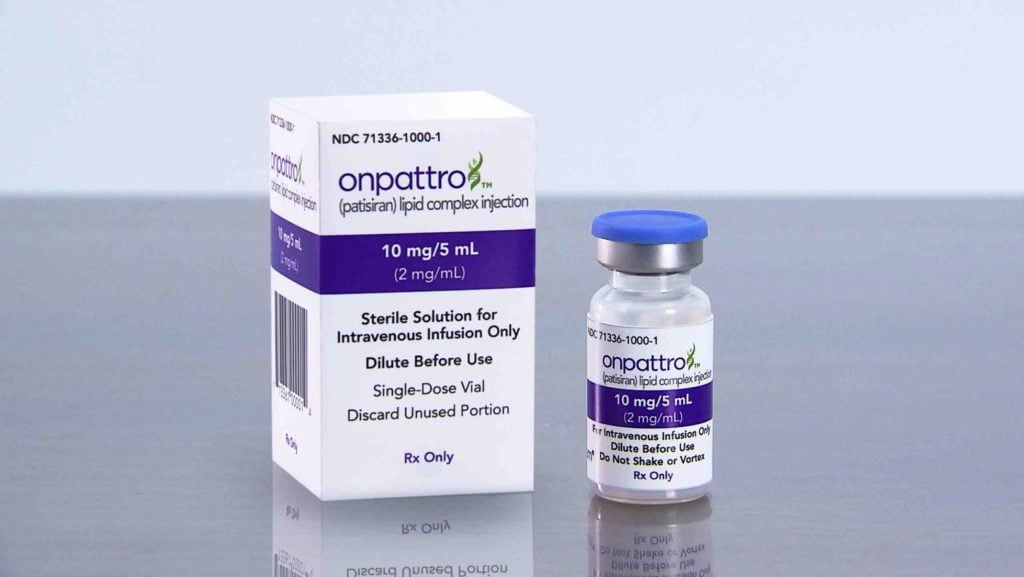The first RNA interference (RNAi) therapy was approved in 2018, after 20 years in development. What can we expect to see in the RNAi field in the future?
After two decades of scientific effort, multiple devastating clinical trial setbacks, and billions of dollars spent on research and development, RNAi therapies are finally establishing themselves in the market. For the past four years, patients in both Europe and the U.S. have been receiving life-saving treatments based on RNAi technology.
It has been a long road to get to this point, and there were times when it seemed RNAi therapies might be consigned to the dustbin of ideas that failed.
As every biology student learns early on, DNA makes RNA and RNA makes protein. This (simplified) rule, coined by Francis Crick, one of the discoverers of the DNA double helix, is known as the “central dogma” of molecular biology.
Disruptions in this process, such as a mutant gene producing a faulty protein, can cause disease. The conventional method of treatment has been to target the faulty protein, and more recently to target the gene itself via gene therapy. It seems obvious that a third approach would be to target and degrade the RNA, the middleman of the process, but this proved easier said than done.
In the late 1990s, early work by American researchers Andrew Fire and Craig Mello revealed that some RNA molecules were able to bind to a specific RNA sequence and prevent it from being used as a template to produce a protein. Their research opened the door to the real possibility that this newly uncovered mechanism of RNAi could form the basis of new therapies. Their work earned them the 2006 Nobel Prize in Physiology or Medicine. However, the hard work was only just beginning.
Targeting translational challenges
The early development of RNAi treatments was fraught with difficulties. These included problems with serious side effects and patient deaths during a number of clinical trials. Notably, Alnylam Pharmaceuticals’ phase 3 trial of revusiran, an early candidate to treat the rare neurological disease hereditary transthyretin-mediated amyloidosis (hATTR), was one of the most problematic trials and had to be halted when 18 patients died.
These challenges resulted in several pharmaceutical giants, including Roche, Pfizer, Abbott and Merck, backing out of RNAi research and development entirely, even after spending billions of dollars chasing the first generation of blockbuster RNAi drugs.
However, Alnylam and a few other companies persisted. In August 2018, the U.S. Food and Drug Administration (FDA) granted approval for the first RNAi therapy, Alnylam’s Onpattro (patisiran) for patients with hATTR. The European Commission followed shortly after, granting European marketing approval for Onpattro later the same month.
People with this rare condition produce a faulty version of a protein called transthryretrin, which accumulates in and damages the nervous system. Onpattro blocks the production of transthyretin, thus potentially halting or reversing disease progression. Before the approval, the only treatment option for some patients was a liver transplant.
“While other companies started to exit the field, we continued to believe in the life-changing benefits of RNAi, and that persistence has paid off,” said Barry Greene, who was President of Alnylam until 2020.
“The approval of the first RNAi therapeutic was a major scientific milestone, not only for Alnylam, but for the entire field. RNAi represents an entirely new way to treat disease. It has the potential to bring hope to tens of thousands of patients around the world living with genetic and rare diseases that were once thought to be untreatable.”

New RNAi therapies in development
Buoyed by Onpattro’s approval, several companies are working hard to bring their own RNAi therapies through the developmental pipeline to patients in the near future. One of them is London-based biotech Silence Therapeutics.
“Historically, RNAi medicines had a brilliant childhood in terms of exciting, well-funded companies being started, but as often happens there was a difficult adolescence. Now, with the recent approvals, and with companies like ours maturing, the future post-adolescence looks very bright indeed,” said David Solomon, previous CEO of Silence Therapeutics.
“With the recent approval of Onpattro, much like the rise of antibody medicines in the mid-’90s, we’ve seen that RNAi medicines are here to stay. We’ve also experienced an enormous amount of interest since Onpattro was approved, not only from investors, but also from pharma companies wanting to do co-development and licensing deals.”
Silence Therapeutics’ lead RNAi candidates in development include a therapy for reducing cardiovascular risk in patients with high lipoprotein(a) levels and another for rare hematological diseases like beta-thalassemia and myelodysplastic syndrome. The former silences the LPA gene, lowering lipoprotein(a) levels and reducing the risk of heart diseases and strokes. The latter targets a protein called hepcidin, which is a key regulator of iron balance in the body.
Another key player is Madrid-based Sylentis. The company develops RNAi therapies administered as eye drops to combat eye diseases, which cumulatively affect hundreds of millions of people across the globe. Sylentis currently has a dry eye disease treatment in phase 3, and a treatment for macular degeneration in phase 1 trials.
“So far, the goal of dry eye disease treatments has been to relieve its symptoms. Artificial tears are used to help lubricate the eye and need to be applied several times a day,” explained Ana Isabel Jiménez, COO and R&D Director of Sylentis.
“That is why Sylentis is busy researching for ways to improve treatment and make it much more effective, using the mechanism of RNAi which makes it possible to control and reduce the levels of abnormal proteins that would naturally improve eye hydration, and thus reduce the pain and discomfort of dry eye.”
Other companies developing RNAi therapies for new indications include South Korea’s OliX Pharmaceuticals, which is working on drugs targeting male pattern baldness as well as hypertrophic and keloid scars, and compatriot Lemonex Inc., which is also working on therapies for reducing hypertrophic and keloid scarring.
An expanding market
There are currently five FDA-approved RNAi therapies, with more in phase 3 trials in development from Sanofi, Sylentis and U.S. companies Arrowhead Pharmaceuticals and Dicerna Pharmaceuticals.
The post-Onpattro atmosphere of RNAi optimism has spurred on a new global wave of investment and licensing deals, totaling billions of dollars with Alexion, Eli Lilly and Janssen all announcing deals with companies developing RNAi therapies. Silence Therapeutics, for example, has research and collaboration deals with AstraZeneca, Takeda and China’s Hansoh Pharma.
In November 2021, the pharmaceutical giant GSK signed a license agreement with Arrowhead Pharmaceuticals in a deal potentially worth more than $1 billion to develop an RNAi therapy for the aggressive liver disease nonalcoholic steatohepatitis, which is currently in phase 1/2 trials. A month later, Novo Nordisk acquired Dicerna Pharmaceuticals, whose lead candidate is a treatment for primary hyperoxaluria, a rare genetic liver disease.
With any luck, RNAi’s “difficult adolescence” may be truly over. While there are still some issues to be overcome, such as the high price of first-wave RNAi medicines hampering affordability, the technology looks to be finally living up to its potential as a truly revolutionary and disruptive new class of medicines.
This article was originally published in December 2018 and has since been updated with recent advances in the RNAi field.





